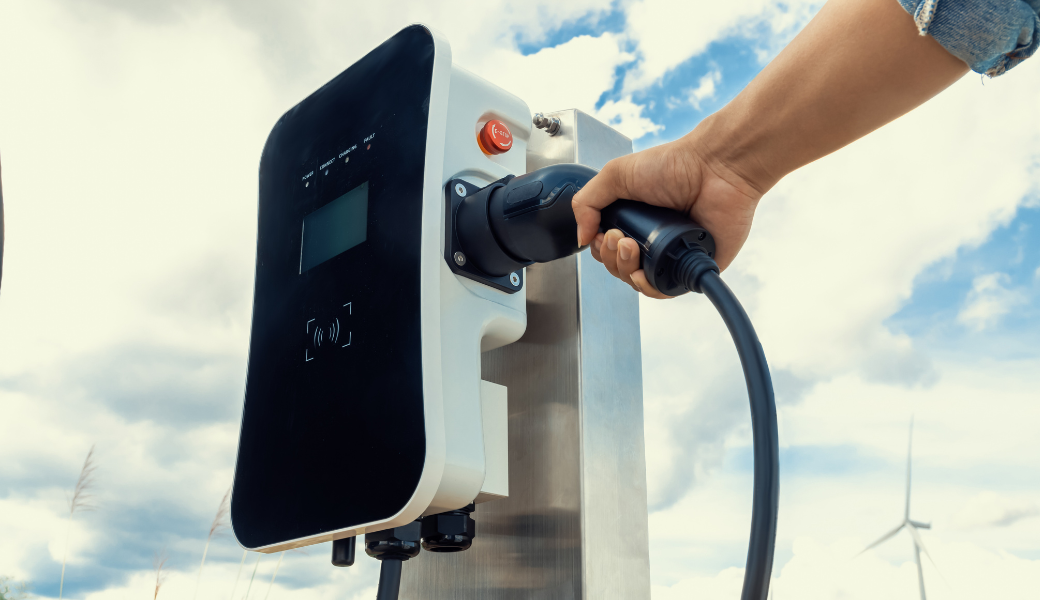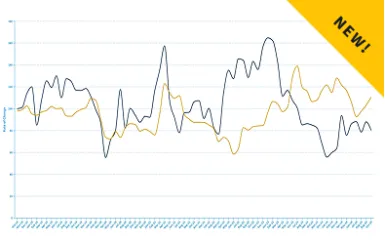RV Industry Association Releases Report On The Need For Pull-Through EV Chargers

The RV Industry Association has partnered with global engineering firm Black and Veatch to release a report and financial analysis that makes the case for federal funding to be used to install pull-through electric vehicle charging stations to meet the needs of RVers today and well into the future.
The RV Industry Association’s Government Affairs team launched lobbying efforts to ensure charging infrastructure accounts for RVs last year after the bipartisan Infrastructure Investment and Jobs Act was signed into law. The law allocates $5 billion for the states to install DC fast charging to fill in charging gaps and $2.5 billion for cities, counties, local governments, and Tribes to deploy community charging hubs in urban and rural communities as well as fill in remaining gaps. The Association’s Government Affairs team is working to ensure these funds will be used to create more pull-through sites suitable for RVers.
“Our team has been working to ensure that RVs are not left behind during the transition to electric vehicles,” says Jason Rano, Vice President of Government Affairs. “This report outlines the importance of establishing more RV-accessible pull-through charging stations for consumers. This is a once-in-a-generation opportunity to deploy EV charging nationwide and the need already exists with RVers already pulling their RVs with electric vehicles.”
The report lays out the current electric vehicle landscape, the consumer’s need for pull-through charging, and the importance of designing for pull-through charging. The document concludes that the momentum in electric vehicle sales and adoption across the United States can only be sustained if the entire electric vehicle consumer population can access convenient, safe charging infrastructure along interstates, highway corridors, and near popular destinations, including in rural communities that RVers frequent.
The document also considers various use cases, focusing on the importance of larger electric vehicles easily accessing charging stations. These use cases include:
- Electric vehicles, such as the Rivian R1T and Ford F150 Lighting, that are already pulling a towable RV (towables make up over 88% of the RV market)
- Electrified motorized RVs and electric assist trailers
- Medium and heavy-duty vehicles
"This paper and financial analysis shows decision makers, charging companies, and site hosts who are making decisions today that will impact the design of EV charging stations for years to come the importance and value of accounting for RVers and other medium and heavy-duty vehicles,” Rano continued.
In addition, the report points out that RVers who drive an electric vehicle and pull a towable RV will need to charge more frequently given the impact that towing has on an electric vehicle’s range. These RVers will be seeking out charging more frequently, ultimately spending more time and money at charging sites.
“If you build it, they will come,” said Rano. “EV drivers, out of necessity, are planners. Site hosts that cater to RVers with pull-through charging will reap the financial rewards.”
Pull-through charging also leads to more efficient use of pull-in charging. Without pull-through charging, electric vehicles with towables would either have to decouple and park the trailer somewhere or, along with other medium and heavy-duty vehicles, potentially pull across multiple charging spots blocking chargers. While pull-through charging would likely require more investment, the financial analysis shows that site hosts could recoup that investment in just a few years.
The report also encourages decision makers to implement more pull-through charging stations in rural communities, whether DC fast charging and/or Level 2, as RVers frequent rural communities on their journeys
Please Sign in to View
Log in to view member-only content.
If you believe you are receiving this message in error contact us at memberservices@rvia.org.

